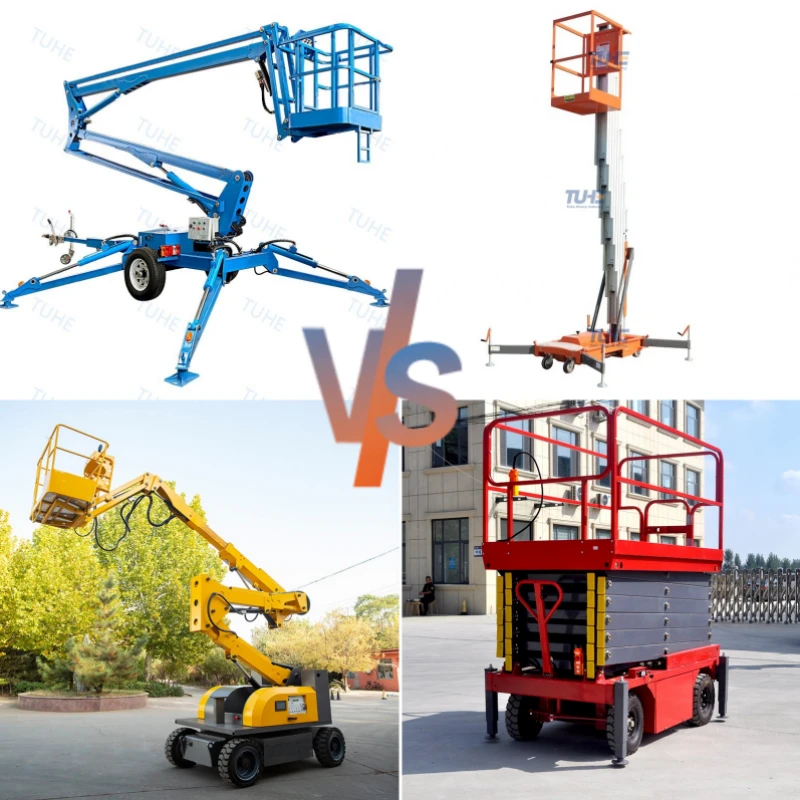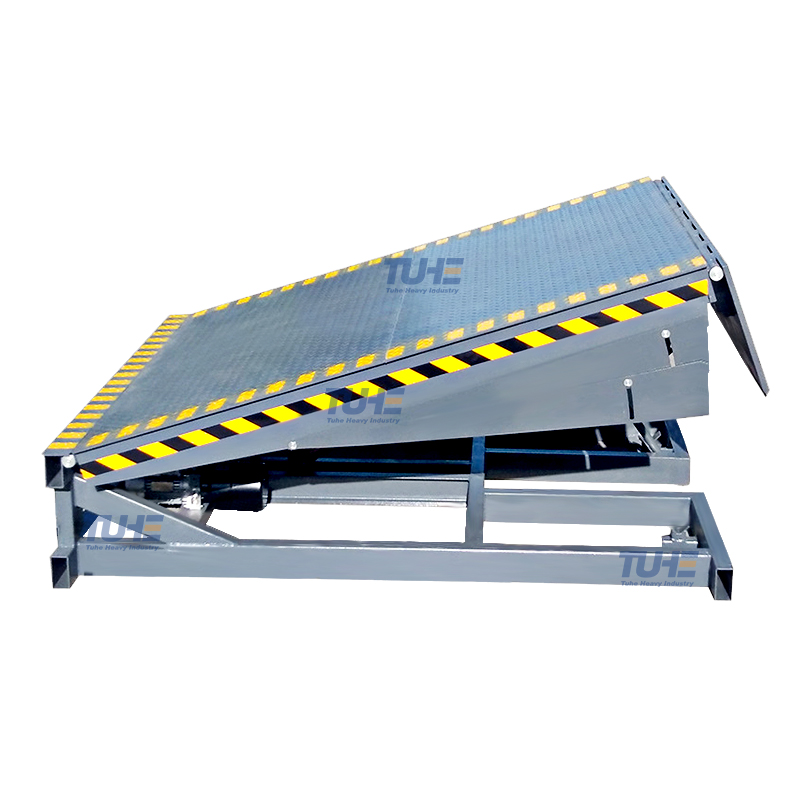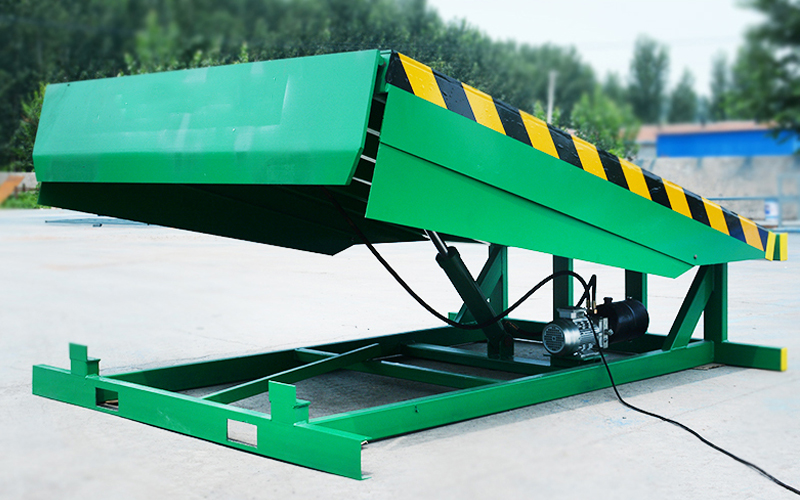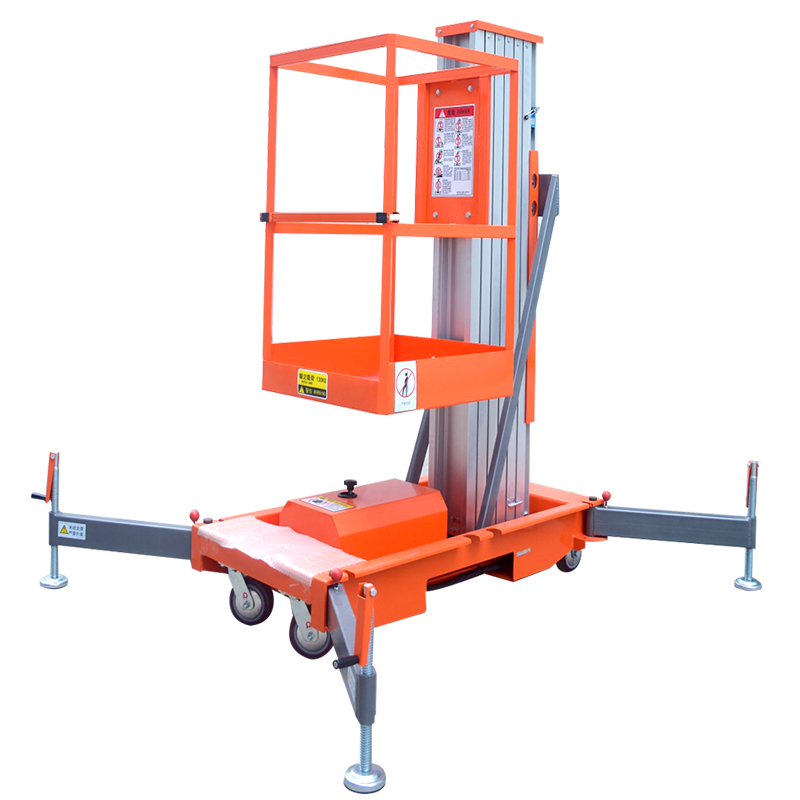When choosing aerial work platforms, two common options often come up: boom lifts and skylifts. Although many people use these terms interchangeably, they refer to different categories of lifting equipment with distinct structures, performance characteristics, and usage scenarios.
This article provides a comprehensive comparison of boom lifts vs skylifts, supported by industry data, technical specs, safety statistics, and market insights. It also includes professional data tables to help buyers make informed decisions. Finally, the article introduces Tuhe Lift, a leading manufacturer with strong production capacity and reliable global service.
What Is a Boom Lift?
A boom lift is a type of aerial work platform equipped with a hydraulic arm that can extend vertically and horizontally, allowing workers to reach high and awkward positions.
Two main types of boom lifts:
Articulated Boom Lift – The arm bends at multiple joints (knuckles), ideal for navigating obstacles.
View related products: China Manufacturer Lifting Table 20m Articulated Boom Lift Mobile Man Lift Platform with CE
Telescopic Boom Lift – Provides straight-line extension for maximum horizontal reach.
View related products: Telescopic boom lift
Typical Applications
Building construction and exterior maintenance
Tree trimming
Electrical line installation
Industrial facility maintenance
Window cleaning for tall buildings
Key Features of Boom Lifts
Outstanding horizontal outreach
Ability to access hard-to-reach work zones
Superior maneuverability
Higher lifting height than most skylift types
What Is a Skylift?
The term skylift is used differently depending on the region. Globally, it typically refers to:
Scissor Lifts – Vertical lift platforms with a crisscrossing (scissor-like) support mechanism.
View related products: Hydraulic mobile scissor lift table with CE
Vertical Mast Lifts – Compact single-mast machines designed for narrow indoor spaces.
View related products: Push around vertical mast lift 21 ft.-25 ft
In most industry contexts, “skylift” refers broadly to vertical access lifts, not boom-type machines.
Typical Applications
Indoor ceiling work
Warehouse maintenance
Shopping mall signage installation
HVAC and lighting installation
Factory equipment servicing
Key Features of Skylifts
Pure vertical lifting
Large platform workspace (especially scissor lifts)
High stability
Lower purchase and maintenance cost
Boom Lift vs Skylift: Structural Comparison
Table 1 – Structural Differences
| Feature | Boom Lift | Skylift (Scissor/Mast) |
|---|---|---|
| Lifting Motion | Vertical + Horizontal | Mainly vertical |
| Arm Type | Telescopic or articulated boom | Scissor arms or vertical mast |
| Maneuverability | Very high | Moderate to low |
| Platform Size | Smaller | Larger workspace |
| Typical Height | 16–45m | 6–20m |
| Reach Capability | Excellent | Limited |
| Ability to Bypass Obstacles | Yes | No |
Market Data: Global Demand and Usage Trends
According to Global Aerial Work Platform Market Report 2024-2025:
Market Share by Type
Scissor Lifts (Skylifts): 55%
Boom Lifts: 38%
Others (mast lifts, personal lifts): 7%
Projected Growth Rate
Boom lifts: 5.7% CAGR (2024–2029)
Scissor lifts: 6.2% CAGR
Demand is driven by:
Warehouse automation
Infrastructure development
Industrial maintenance
Residential construction growth in developing markets
Performance Comparison Based on Research Data
Table 2 – Performance Metrics
| Metric | Boom Lift | Skylift |
|---|---|---|
| Max Working Height | Up to 45m | Usually up to 20m |
| Horizontal Outreach | Up to 20m | 0m (vertical only) |
| Maneuverability | Excellent | Medium |
| Outdoor Suitability | Strong | Moderate |
| Indoor Suitability | Medium | Strong |
| Platform Capacity | 200–300 kg | 230–450 kg |
| Stability Ranking | Moderate | Very high |
According to a 2024 industry maintenance study:
Boom lifts operate in 63% outdoor projects
Skylifts operate in 78% indoor projects
Productivity and Cost Comparison
Table 3 – Productivity Efficiency
| Work Scenario | Boom Lift Efficiency | Skylift Efficiency |
|---|---|---|
| Tasks with obstacles | Very high | Low |
| Narrow indoor spaces | Low | Very high |
| High-elevation outdoor projects | Excellent | Limited |
| Long-distance horizontal reach | Excellent | Not applicable |
| Heavy-duty loading | Medium | High |
Cost Comparison
Industry price benchmarks (global average 2024):
| Equipment Type | Price Range (USD) | Annual Maintenance Cost |
|---|---|---|
| Boom Lift | $18,000 – $75,000 | $800 – $1,200 |
| Skylift | $4,500 – $25,000 | $300 – $600 |
Skylifts provide a higher cost-performance ratio in indoor applications, while boom lifts are indispensable for complex, high-elevation outdoor tasks.
Safety Data Comparison
According to analysis from the International Powered Access Federation (IPAF):
Accident Distribution by Equipment Type
Boom lifts: 48% of reported incidents
Scissor lifts: 38%
Mast lifts: 6%
Boom lifts have higher risk levels due to:
Greater heights
Outdoor wind sensitivity
Complex arm movements
However, modern manufacturers (including Tuhe Lift) incorporate:
Overload protection
Anti-tilt systems
Emergency lowering system
Automatic platform leveling
Intelligent fault monitoring
Boom Lift vs Skylift: Which One Should You Choose?
Choose a Boom Lift If You Need:
✔ Long horizontal reach
✔ High outdoor working height
✔ Ability to bypass obstacles
✔ Flexible movement around job sites
Best for:
Construction, forestry, powerline repair, industrial maintenance
Choose a Skylift If You Need:
✔ Stable vertical lifting
✔ Safe indoor operation
✔ Larger platform space
✔ Lower equipment cost
Best for:
Warehousing, indoor maintenance, retail signage, exhibition centers
Why Tuhe Lift Is the Best Manufacturer for Boom Lifts and Skylifts
Company Overview
Tuhe Lift, founded in 2012 by six senior engineers, is located in Jiyang, China—recognized as the Hometown of China’s Lifting Platform Manufacturing. With the mission to become China’s top lift manufacturer, Tuhe Lift has grown rapidly and now operates:
3 large production workshops
1 modern showroom
300+ experienced employees
20 global distributors
Advanced Product Lines
Tuhe Lift has independently developed 6 major product series and 50 varieties, including:
Scissor lifts (skylifts)
Mast lifts
Articulated boom lifts
Cargo lifts
Home lift series
All products feature:
High cost-performance ratio
Reliable structural design
CE, SGS, and international certifications
Global Market Presence
Tuhe Lift supplies both domestic and international markets:
USA
Australia
Germany
Algeria
Peru
And many other regions
Flexible and Efficient Services
Tuhe Lift provides:
1-day design solutions
24/7 online support
7-day fast delivery
1-year comprehensive warranty
OEM/ODM customization
This one-stop service saves customers significant time, especially for construction companies, distributors, and rental businesses.
Why Choose Tuhe Lift Over Other Suppliers?
✔ Factory-direct prices
✔ Advanced engineering team
✔ High-precision manufacturing
✔ Fast global shipping
✔ Excellent after-sales support
✔ Long-term partnership vision
Tuhe Lift actively seeks long-term cooperation, offering premium equipment at favorable prices. Visitors are always welcome to tour the showroom and factories.

222.webp)


660.webp)
503.webp)
695.webp)

